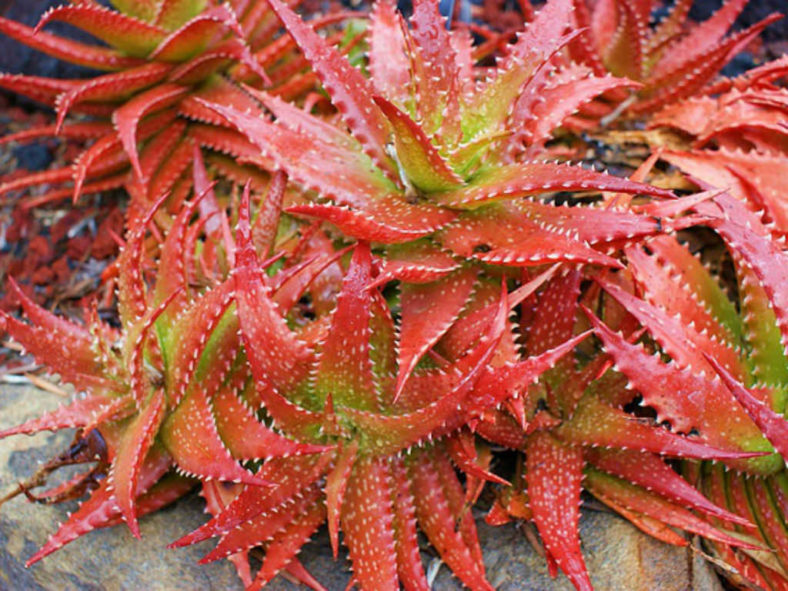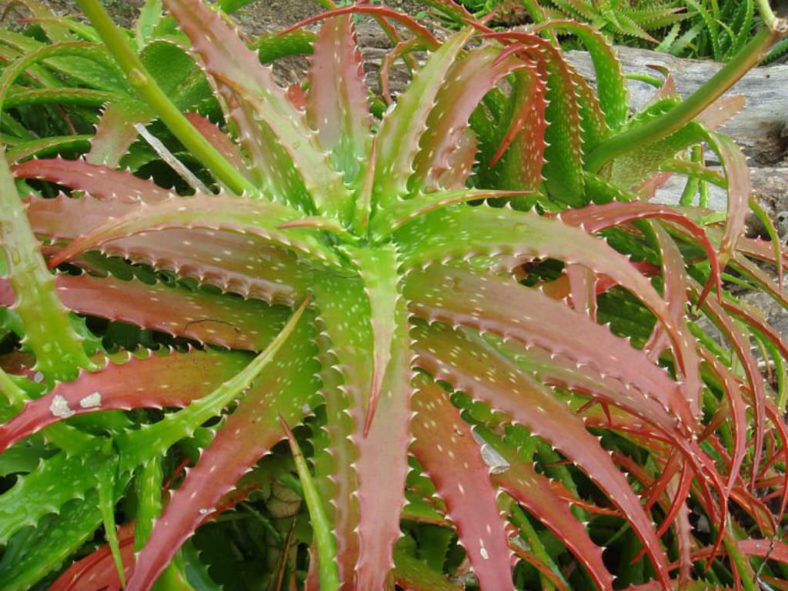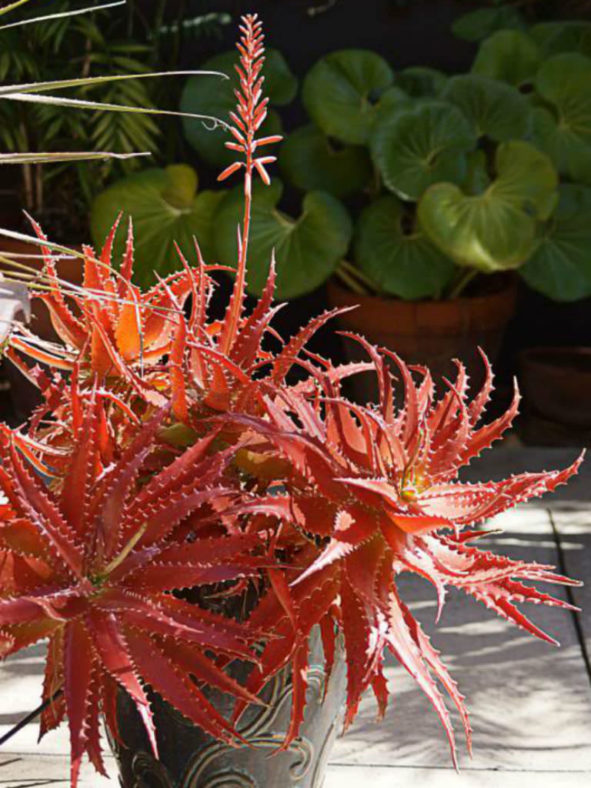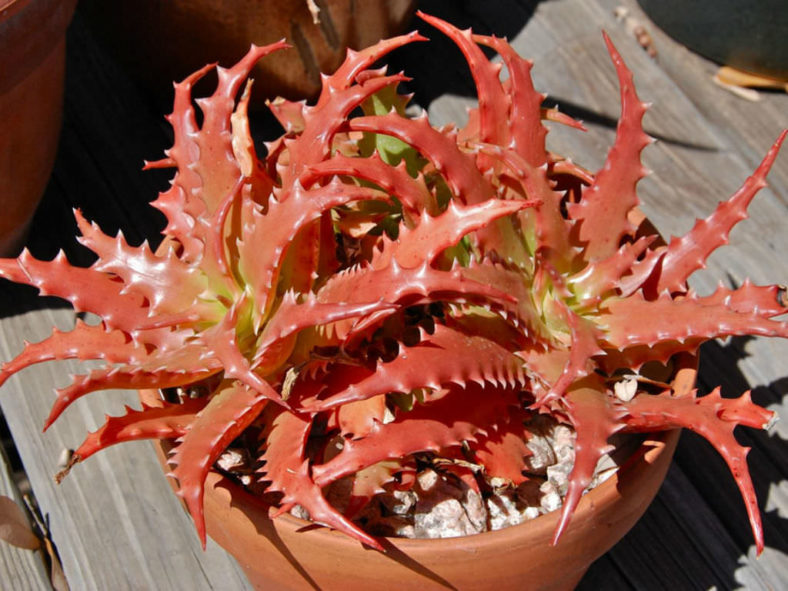Scientific Name
Aloe dorotheae A.Berger
Common Name(s)
Crimson Aloe, Sunset Aloe
Synonym(s)
Aloe dorothea, Aloe harmsii
Scientific Classification
Family: Asphodelaceae
Subfamily: Asphodeloideae
Genus: Aloe
Etymology
The specific epithet "dorotheae" (pronounced "dor-uh-THEE-ay") honors Miss Dorothy Westhead (fl. 1908), London, without further data.
Origin
Aloe dorotheae is native to Tanzania.
Description
Aloe dorotheae is an eye-catching succulent that forms rosettes of shiny, yellowish-green leaves, which turn orange-red in full sun. It can grow up to 12 inches (30 cm) tall and freely produce offsets, forming large clumps of rosettes growing on sprawling or decumbent stems. The leaves are thick, fleshy, and recurved, with teeth along the margins and often with some white spots.
The flowers are tubular, ranging from orange-red to yellow with green tips. They appear in winter on usually unbranched flower stalks that can grow up to 2 feet (60 cm) long.

How to Grow and Care for Aloe dorotheae
Light: When growing Aloes indoors, place your plants in a southern or southwest-facing window with plenty of bright, indirect light. When grown outdoors, provide light shade, especially during the hottest parts of the day.
Soil: Plant Aloes in well-drained soil specially formulated for cacti and other succulents, or make your soil mix. Drainage is essential because too much moisture around roots can cause root rot.
Hardiness: Aloe dorotheae can withstand temperatures as low as 25°F to 50°F (-3.9°C to 10°C), in USDA hardiness zones 9b to 11b.
Watering: These succulents require regular watering, but they are also very tolerant of drought conditions for short periods. Water deeply, but only when the top of the soil is dry. Reduce watering during the winter months.
Fertilizing: Aloes generally do not require fertilizer, but may benefit from the extra nutrients.
Repotting: These plants are not particularly fast-growing and will only rarely need repotting. Repot them in the spring in a container that is a few inches larger in diameter every few years to prevent them from becoming rootbound.
Propagation: Propagating Aloe can be done using offsets, cuttings, or seeds from a mature plant.
Learn more at How to Grow and Care for Aloe.
Toxicity of Aloe dorotheae
Aloe dorotheae is not known to be toxic to people or pets.
Links
- Back to genus Aloe
- Succupedia: Browse succulents by Scientific Name, Common Name, Genus, Family, USDA Hardiness Zone, Origin, or cacti by Genus
Photo Gallery
Click on a photo to see a larger version.


